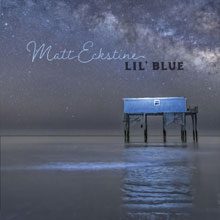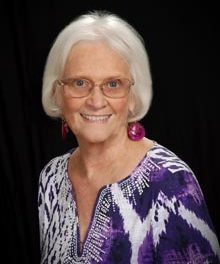Patti Callahan brings her new novel ‘Once Upon a Wardrobe’ to the Pat Conroy Literary Festival

Patti Callahan is in the middle of a book tour. But what’s new?
In the three years since we discussed her “true life novel” Becoming Mrs. Lewis – and I wrote about it here – the Harper Lee Award-winning author has published four books: The Favorite Daughter; Surviving Savannah; Wild Swan: A Story of Florence Nightingale; and now, Once Upon a Wardrobe. I have no idea how she keeps up the pace.
And get this: Just a couple of weeks ago, on the brink of her new book’s pub date, Patti’s second grandchild was born in Hawaii. So Patti flew to her daughter’s side, loved on Baby Beatrix, then flew back home to birth her own latest literary baby. She tells me she’s been “insane,” that she’s spent every free moment since Hawaii “either driving or sleeping.”
I’ve managed to snag a phone interview while she’s on the road from Pawley’s Island – where she’s just done a luncheon and book signing – to Charleston, where she has an evening event.
“I feel like a politician, driving from place to place, giving my stump speech,” she laughs, with a weary edge to her voice.
It’s not easy being a ridiculously prolific New York Times bestselling author, but somebody’s gotta do it.
Patti’s Wardrobe road show will be in Beaufort and Bluffton next weekend for the Pat Conroy Literary Festival. Friday, she’ll join other big name southern writers at Beaufort’s Black Chamber of Commerce for a panel discussion remembering the late Dorothea Benton Franks. And on Sunday afternoon, she’ll join me at Lowcountry Presbyterian Church in Bluffton, to talk about Once Upon a Wardrobe.
Once again, Patti Callahan has reimagined the world of beloved writer, scholar, and Christian apologist C.S. Lewis to create another true life novel, but those expecting a reprise of Becoming Mrs. Lewis are in for a surprise. Wardrobe is a very different kind of book.
It’s the first from a new HarperCollins imprint called Harper Muse, which emphasizes historical fiction, women’s fiction, and Southern fiction. According to the website, Harper Muse “seeks to illuminate minds and captivate hearts through story.” With that mission in mind, the imprint has chosen a perfect inaugural novel in Once Upon a Wardrobe.
Here’s the setup, from Patti’s Amazon page:
Megs Devonshire is brilliant with numbers and equations, on a scholarship at Oxford, and dreams of solving the greatest mysteries of physics.
She prefers the dependability of facts—except for one: the younger brother she loves with all her heart doesn’t have long to live. When George becomes captivated by a brand-new book called The Lion, the Witch and the Wardrobe and begs her to find out where Narnia came from, there’s no way she can refuse.
Despite her timidity about approaching the famous author, Megs soon finds herself taking tea with the Oxford don and his own brother, imploring them for answers. What she receives instead are more stories . . . stories of Jack Lewis’s life, which she takes home to George.
Why won’t Mr. Lewis just tell her plainly what George wants to know? The answer will reveal to Meg many truths that science and math cannot, and the gift she thought she was giving to her brother—the story behind Narnia—turns out to be his gift to her, instead: hope.
Margaret Evans: For me, reading Once Upon a Wardrobe was almost like reading a fairy tale. It’s not exactly Narnian – there are no fauns or white witches or talking lions, nothing supernatural – but there’s some kind of enchantment going on . . .
Patti Callahan: I’m so glad you said that. I wanted it to feel like a bedtime story. Dreamy. I wanted to show Lewis’s life events through George’s eyes – an eight-year-old’s eyes. I wanted it to feel that way to YOU, the reader. Also, I wanted you to feel Megs change. And I really wanted to show how the ordinary can be turned into the extraordinary.”
ME: How did the book come to be, exactly? Had you already begun to imagine Once Upon a Wardrobe 
while researching and writing Becoming Mrs. Lewis, years ago?
PC: Not at all! I didn’t think I’d ever write about Lewis again. People even asked me, “What will you do with all that research?” I did have a lot of material that I hadn’t used in the book, but that’s why I did the Mrs. Lewis podcast.
Honestly, this is such a meta question. You’re asking for the origin story of a book about an origin story. The answer is: I did see crumbs of Lewis’s life while researching Mrs. Lewis. I had no plans for writing about it. Wasn’t remotely considering that. But I’m really enamored of origin stories. You know, things like Finding Neverland… Christopher Robin… And one day, this little boy named George just . . . came to me. He came to me whole, as characters sometimes do. And I thought – maybe Narnia needs an origin story.”
ME: I figured the Megs character had come first, and even wondered how much of Megs is you. After all, you were a clinical pediatric nurse – a “science person” – before you became a fiction writer . . . a person of “imagination.” How much of Megs is Patti?
PC: I don’t really know, do I? That’s kind of what this book is about. As authors, how much of our “real lives” make it into our fiction? How much of storytelling is conscious and how much is unconscious? How much is intentional, and how much is mystical, ineffable?
As for the science/math vs. imagination/art thing? I think there’s probably a little bit of George and a little bit of Megs in all of us. I see them almost as archetypes for those two warring factions in each of us.
ME: Leaving those deep thoughts behind, can I geek out a little bit? As a C.S. Lewis fan girl, I’m wondering about your experience with other Lewis fans, now that you’ve written two books with Lewis as a central character. What are they (we) like?
PC: Well, they’re very serious about Lewis, I can tell you that! Very cautious. Proprietary. And I get that. I had a number of Lewis experts read this book before it was published to make sure I didn’t get anything wrong.
ME: I would say you’re a bit of an expert yourself at this point.
PC: Not at all! Despite all the research I’ve done, I don’t consider myself a Lewis scholar, and I definitely don’t consider myself a theologian. I have no interest in telling people what I think Lewis meant . . . about anything. I want readers to hear from Lewis himself, and divine their own meaning. But that means I can’t misrepresent anything he said. I have to get it right.
ME: Unlike everybody on social media. (Haha.) I think C.S. Lewis may be the most misquoted human being on Facebook.
PC: Right!? That fake Screwtape Letters thing that’s being going around for years . . .

ME: You can’t kill it! It won’t die. And what about that quote “You are never too old to set a new goal or dream a new dream”? There must be a dozen different memes of that one floating around, all attributed to C.S. Lewis. Nothing wrong with the sentiment, but anybody who knows Lewis well immediately knows he would never say it . . . like that. Lewis didn’t do trite.
PC: Right! He’d find a much more specific and interesting way to convey that idea.
ME: Well, we are living in the age of misinformation, right? In fact, we’re living in generally dark and crazy times. And into this crazy darkness comes your enchanting, luminous “bedtime story.” Is there still a place in this mad, bad world for a story like yours? Or have we become too jaded and cynical – too “old” in the collective sense – for fairy tales?
PC: I actually wrote about that in an essay for Parade recently. You should read it. It’s on my Facebook page. Heh.
ME: Ah, I knew Facebook was good for something. I’ll do that. Thanks for your time, Patti. Safe travels and good luck with the rest of the book tour. See you at Conroy Fest.
From ‘Are We Too Old for Fairy Tales?’ by Patti Callahan, Parade Magazine:
In the opening page of The Lion, the Witch and the Wardrobe, legendary 20th-century author C.S. Lewis dedicates the book to his goddaughter, Lucy, by writing, “Someday you will be old enough to read fairy tales again.” What does he mean when he says this? Old enough? Didn’t he mean ‘young enough’?
Or maybe he didn’t. Maybe he meant that fairy tales appear when we need them—both when we’re young enough to view the world in wonder, and old enough to know that behind life’s difficulties sometimes lurks some magic. I will never feign to answer for Lewis, but it does beg the question—are we yet old enough to read fairy tales again?
Patti Callahan will be in Beaufort and Bluffton for the 6th Annual Pat Conroy Literary Festival, November 4 – 7. For a full schedule of events, visit www.patconroyliteraryfestival.com









